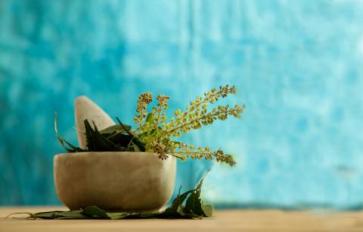
Farmers have been saving their own seeds for ages. There are many reasons you should save your own seeds too. For starters, it can save you money, but there are many more reasons than this. Here's why you should start saving your seeds, and how to do it.
Saves Money
As I mentioned earlier, saving your seeds will honestly save you money in the long run. Think about it: Seeds cost money, especially if you buy them organic or heirloom. However, when you save seeds from your best performing crops, you won’t have to buy them again, come next season. You’ll already have them stashed away, which will save you money in the long run. Plus, when you buy expensive heirloom and organic seeds, they really pay for themselves in no time when you save their seeds for next season. One tomato seed packet can feed you hundreds of tomatoes, after all!
Guarantees Consistent Quality
When you save the seeds from your highest performing plants, you’re ensuring that same, reliable quality is passed down into the next plants. This will make sure you have dependable plants that produce the highest quality crops. Never take or save seeds from low performing crops though. It’s important to note that many large seed suppliers rarely pull out inferior or off-type plants. This means the seeds they sell may have a lot of off-types in them, which translates into a lot of losses for gardeners or market farmers. That’s why it’s so important to save your own seeds, or get more premium seeds produced by small, organic seed suppliers. It will help you avoid so much loss, and while the organic seed suppliers will cost more, they will properly select the best, highest quality seeds to save, compared to large seed suppliers.
Ensures Seed Security
Have you noticed that there are limited variations of produce on the grocery store shelves, compared to at the farmers market? That’s because hundreds of amazing plant varieties have been discontinued by big corporations, simply because they want to focus on more profitable hybrids. However, when you save your own seeds, you control the supply. You can ensure seeds of rare variations get saved and used over and over again in your own backyard when you save your own seeds. This is a way to ensure seed security. Seed security, overall, is defined as ready access to adequate quantities of quality seed and planting materials of crop varieties. Unfortunately, it’s rare to find accessible, available, and acceptable quality seeds all in one go, which can lead to lots of problems for farmers (and gardeners). It can be tricky to find certain varieties of seeds even in seed catalogs. That’s why it’s so important to save seeds from the highest quality crops in your garden whenever possible.
Promotes Regional Adaptability
Most commercially available seeds have been selected because they’re able to grow and perform pretty well across the country, if given synthetic fertilizers. Most conventional seeds won’t flourish in your region without the use of synthetic fertilizers, sadly, unless they’re organic varieties. There are several companies who now offer seeds selected to perform in organic conditions, but this practice isn’t too common, or the norm yet. However, when you save seeds from your best performing plants grown on your own land, these seeds will gradually develop varieties that are better adapted to your soil, growing practices, and climate over time. Their adaptability will certainly amaze you, and they certainly won’t need any synthetic fertilizers just to get them to sprout or remain healthy. Instead, they’ll perfectly acclimate to your unique cultural conditions and continue to produce strong, reliable produce for generations to come.
How To Save Your Seeds
Now that you know the various reasons you should always save your seeds (but only from the highest quality plants), it’s important to learn exactly how to do it. Here are a few tips I have for you to keep in mind.
- Always choose open-pollinated (OP) varieties for seed saving. OP plants are non-hybrid plants with seeds that are true generation after generation. Hybrid varieties will be labeled in catalogues and on seed packets as “hybrid” or “F1” so be sure to look out for those and avoid them when possible.
- The easiest crops to save seeds from are tomatoes, peas, beans, and peppers because they’re all self-pollinating crops. To maintain the plant’s genetic diversity, you should ideally grow and save seed from 20 or more plants (if possible).
- Cross-pollinating plants, such as corn, carrots, melons, cucumbers, squash, beets, and brassicas, must receive pollen (via insect or wind) from other plants of the same variety to produce true to type seed. The simplest way to go about saving seeds from them is to grow only one variety of a given species. You can save seeds from just one or two plants.
- To save seed from legumes (aka self-pollinating peas and beans), simply allow some pods to dry on the plant. Save the leftover seed at the end of the picking stage.
- Good record keeping is essential. Make sure you label your stored seeds, seedlings, and planted rows so you always know what’s what. You can also keep a map or a notebook in case weather washes away your labels.
- You can hand harvest flowerheads as they dry. Morning glories and vine crops often mature their bottom seed husks or pods first and progress up the vine as the season goes on. Spread their seeds out to dry, rub them back and forth between your hands to free the seed, and then winnow most of the chaff.
- Peppers, eggplants, cucumbers, and tomatoes can be picked as individual fruit. Let the fruit become very ripe to overripe to ensure the seeds mature. That means leaving cucumbers on the vine until they mature past the yellow blimp stage, leaving eggplant until it starts to brown and rot, and leaving tomatoes and peppers until very ripe or just past ripe.
- Tomatoes and cucumbers have a gel sac around each seed that hinders germination. They need to be soaked to remove the gel sac. Squeeze the tomatoes or scrape the seed from the tomato cavities into a labeled container, covering it to keep out flies. Allow the seeds to soak for about 24 to 48 hours. Add more water after soaking. The good seeds will sink while the immature seeds will float to the top. Pour off the pulp, then add more water and continue to pour off the pulp until all that remains is clean seed at the bottom. Pour this seed into a strainer and drain off all the liquid, then spread the seeds out to dry in a cool, airy place (spreading them on newspaper works well—avoid paper towels because they will stick to the seeds). When the tomato seed is half-dried, stir it to make it less clumpy. Once the seeds are completely dried, break up any remaining seed clumps and pack them away for storage. You can repeat this process for cucumber seeds as well.
- For eggplant seeds, grate the fruit or put it through a food processor, then add it to water. The seed will sink and the pulp will float.
- For peppers, just cut the fruits open and remove the dry seed.
- Store your dried seeds in glass jars or paper envelopes. Glass is best, as it doesn’t allow moisture into the seeds. Store the seeds in a cool, dry place, ideally somewhere less than 50 degrees Fahrenheit with a relatively low humidity level of less than 50 percent. Seed longevity actually doubles for every 10 degrees colder the storage conditions, so it might be best to store some in the refrigerator, or even in the freezer (as long as they’re properly labeled and left undisturbed).
- When you’re ready to use seeds that have been in freezer storage, allow the storage jar to come to room temperature before opening it to avoid condensation on the seed.
Are you planning on saving any of your seeds this season? For more tips on how to store seeds, check out these 7 tips.








